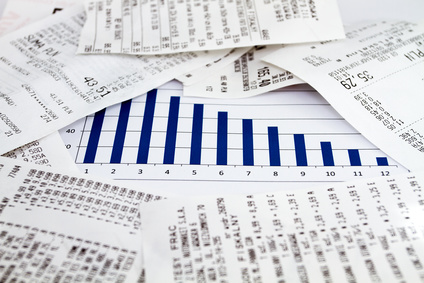A Few Points About Quebec’s Debt

As 2014 drew to a close, one issue that was rearing its ugly head again was provincial government debt. On December 19, Fitch Ratings downgraded Ontario's debt, cutting its rating on Ontario bonds from double-A to double-A-negative and expressing "concern" that Ontario's deficit is going up for the second year in a row. Meanwhile, falling oil prices are threatening to throw Alberta's budget out of whack.
The current Quebec government is at least trying to tame its deficit and start chipping away at its huge debt. But there are some people out there who question whether or not Quebec's public debt is really such a serious problem, and therefore whether our provincial government's "austerity" policies are truly necessary.
Without exhaustively addressing all of the possible permutations of such questions, there are a few important points that Canadians should keep in mind when thinking about Quebec's debt:
– The Couillard government is considering the possibility (at this point, it remains only a goal) of reducing its total workforce by… 2%. Not exactly the wholesale carnage some would make it out to be.
– The government is trying to reduce the rate of acceleration of Quebec's public spending. It must be repeated, and repeated again: This represents, in the best case scenario (or the worst, depending on your point of view), a smaller increase in spending, not a decrease in absolute terms.
– There are several ways of calculating the debt. The Auditor General himself includes different calculations in his annual report in order to help us grasp different aspects of the situation. However, one thing is clear: Quebec is, beyond the shadow of a doubt, the most indebted province in Canada, both in per capita terms and compared to the size of our economy.
The fact that Portugal's and Greece's debts are even more imposing than Quebec's is not terribly relevant.
– Interest payments on Quebec's debt have climbed steadily in recent years, from $7.8 billion in 2009-2010 to $10.6 billion in 2013-2014, increase of 36% in just four years (in inflation-adjusted dollars). And this cost of servicing the debt is projected to keep growing, to reach $12.3 billion by 2018-2019, due to the probable increase in interest rates in the near future.
– It is true that the Quebec government owns numerous assets. The only "liquid" assets, however, are its net financial assets, which came to $15.8 billion on March 31, 2014–a small amount compared to the total debt, regardless of how it is calculated. The market value of infrastructure like roads, schools, and national parks is difficult to evaluate, and it is very unlikely that any of these would be sold to pay down the debt. Indeed, this is why neither the government nor the Auditor General takes infrastructure into account when endeavouring to sketch a realistic picture of the debt. These assets are certainly a part of our wealth, but they do nothing to reduce the total bill–or the growing interest payments–that Quebec taxpayers must cover each year.
– As for the complex question of what should be done to "jumpstart the economy" in a context of high public debt, we must keep in mind one basic fact: Any money spent by government comes from the labour of workers and entrepreneurs. In short, when a government "stimulates" the economy by spending billions, we must always remember that this selfsame economy has actually undergone prior taxation. Quebec could do a better job of favouring wealth creation by valuing work, savings and investment, which would presuppose among other things a competitive tax burden as compared to other North American regions.
Michel Kelly-Gagnon est président et directeur général de l'Institut économique de Montréal. Il signe ce texte à titre personnel.

